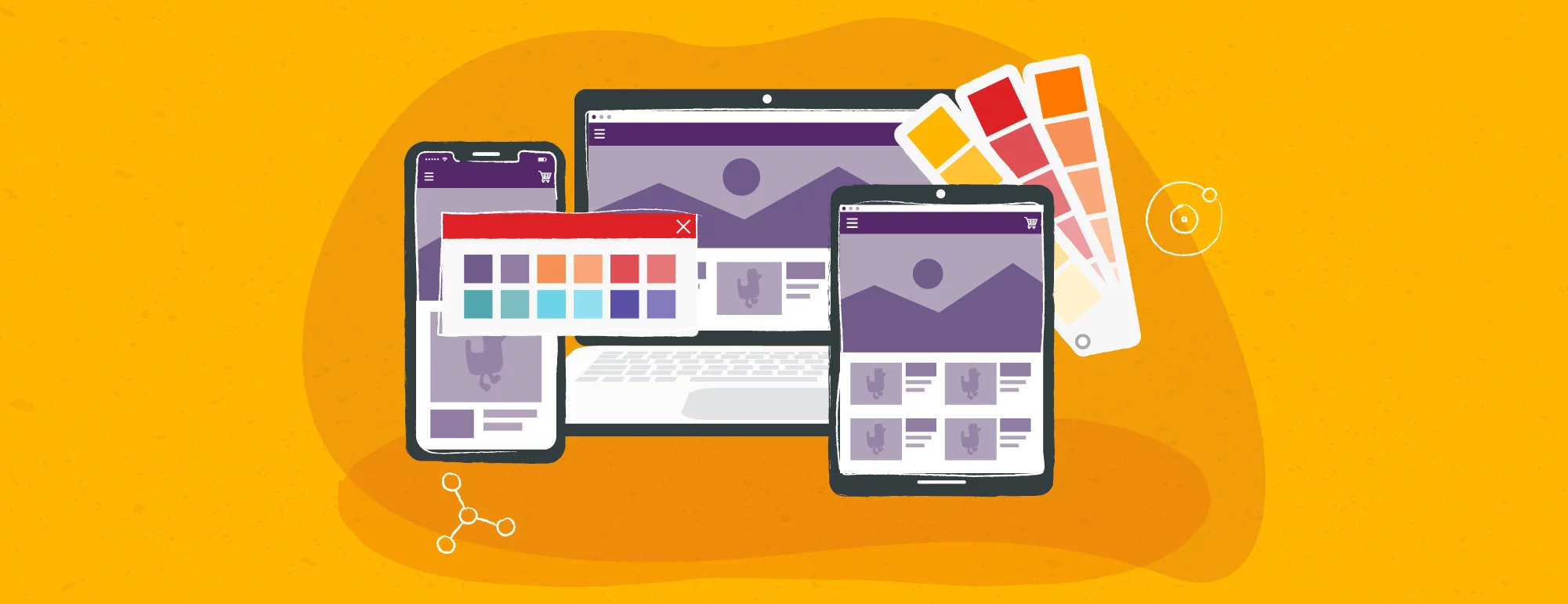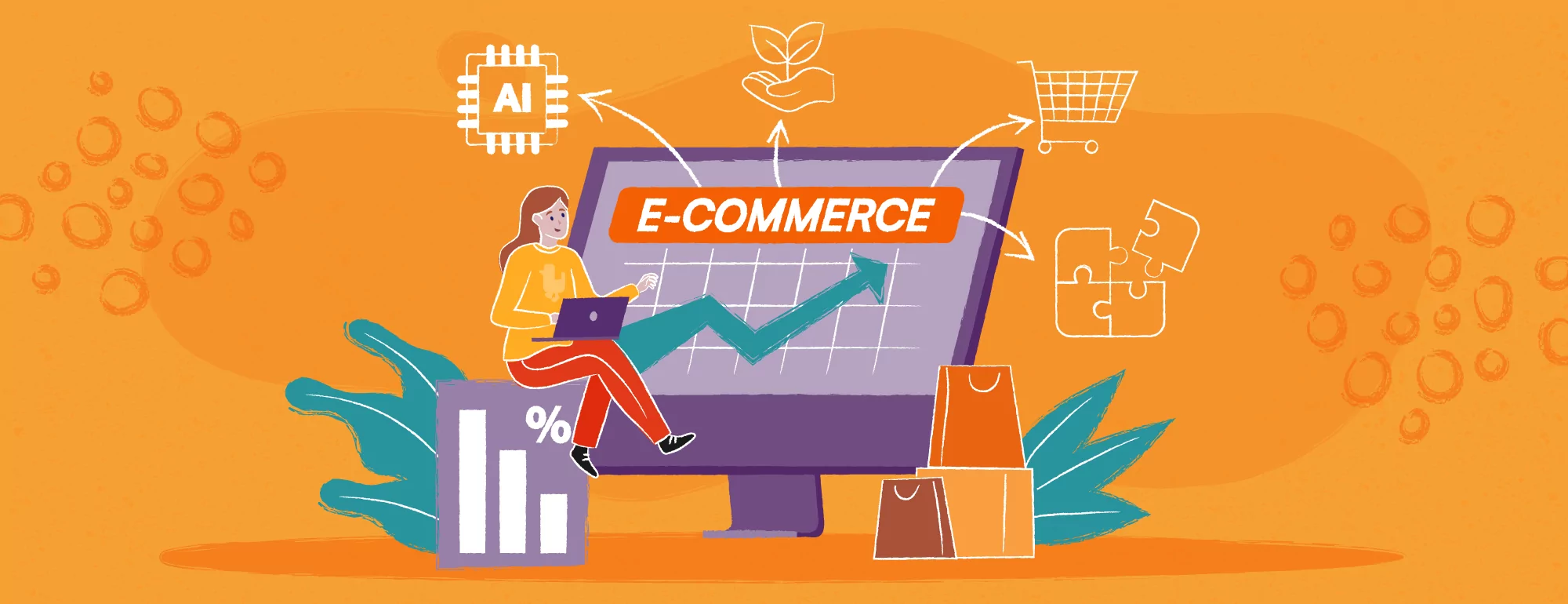Chasing the Gray Dollar: The Emergence of Senior Online Shoppers
The world has changed. Shopping behaviours have gone through a revolution. Customers have adapted – now it’s time for retailers and e-commerce platforms to do the same.
Yes. Even if your business is already online and selling, it might not be enough. Why? Senior shoppers.
Here’s the what, why and how of mastering this situation and coming out on top.
Changes in Shopping Behaviours
A survey conducted by PAYMNTS.com revealed that 40.3% percent of seniors and boomers in the US changed their shopping habits during the pandemic. Additionally, more than half of this group said their shift to online shopping is permanent.
I should also stress that this group is also the most pessimistic when it comes to returning to normality:
- Some 60 percent of those surveyed said they believe their lives won’t return to normal for at least another six months.
- … while 11.5 percent said life will never go back to how it was.
What can we learn from this? Mostly, that online activity is up across the board, especially when it comes to e-commerce – and for many, it’s the new normal, not a temporary choice. The stores and providers they choose now have a good chance of being the ones to gain a claim in this growing market segment.
A Growing Audience
Even if you don’t consider the senior shopper your key demographic, that could very well change in the near future. People over 65+ represent a significant and growing part of the developed world’s population – 16% in North America and 18% in Europe. That’s almost 1 in 5 potential shoppers.
More importantly, many of them are affluent and less likely to be affected economically by the pandemic. They are mostly retired and accumulated significant assets during the post-war boom years.
An Increasingly Tech-Savvy Audience
Generation X will replace baby boomers in the 55-75 age bracket over the next 20 years. For them, the Internet is a way of life and they will definitely continue buying online.
Modern digital commerce platforms must be ready to serve the whole spectrum of shoppers, including those with specific age-related preferences and limitations. While this senior generation will be more and more familiar with technology, they will still expect support where it counts – such as UI and UX.
Which Industries Are The Most Affected?
Of course, there isn’t a business that hasn’t been impacted by the pandemic, but here we’re focusing on senior shoppers and which activities they’re now looking to recreate online.
In the US during the pandemic, 85% of over 60s avoided shopping malls, and around 60% stayed clear of all shops. The potential is huge. So, what did seniors typically go to the shops for?
Groceries
There’s a big shift happening in shopping for groceries online. The growth has been relatively muted as people are slow to change their habits, yet the lockdown forced many people to give it a try – according to a Brick Meets Click/Mercatus survey, such sales volumes in the US alone increased by 450% May 2020 and August 2019. Customers’ feedback was mixed – less than half of them said they are likely or extremely likely to continue shopping this way. The retailers struggled to meet huge demand, which impacted the customer experience but this will trigger to a wave of innovation and investment in new capacity.
The demand will go down in the short term as people go back to physical shops but it should accelerate again in the medium-term – especially for those that managed to provide an efficient and satisfactory level of service.
Pharmacies
Pharmacies are of particular interest to the older generation, who will demand the convenience of the online experience they’ve gained a taste for. In the survey of the community pharmacies released by the National Community Pharmacists Association (NCPA) 61% of the US-based respondents believe consumer demand for online products will remain high following the crisis, requiring a strong online presence for pharmacies.
FMCG
Other than the above two factors, it’s worth addressing fast-moving consumer goods as a whole. The FMCG bracket is vast and includes businesses that previously benefited from a lot of in-store senior shoppers during the day.
These can represent a whole range of weekly essentials, such as cleaning products and other household supplies. Previously, the older generations could pick these up at their convenience, often while picking up groceries, pharmaceuticals and other goods. Now, there’s a prime opportunity for those providers online. What’s more, it’s one with additional benefit for senior generations, as many of these products are heavy and come with a physical strain. Delivery options can mitigate these issues.
How to Support Senior Shoppers
It’s one thing to identify an opportunity, but it’s another to know which actions to take. Here’s our quick primer on some effective changes to help encourage this market segment.
Delivery Options
E-commerce often proves itself a very convenient option until it comes time to delivery – particularly waiting for a signed courier to arrive. However, home delivery is seldom an issue for older shoppers, as many of them are retired and staying in anyway.
Furthermore, many are often happy to do so, as online shopping removes most of the physical challenges of travelling to a shop, walking around aisles or carrying heavy bags . These things become increasingly difficult for older generations – just one of the reasons groceries need to establish an effective online presence to make the ‘big shop’ more manageable.
So, how can businesses easily add these features, especially when it involves third party systems beyond their direct control? Our business developer, Lukasz Rychlinski, gave us the simple but effective answer – integrations:
Delivering a unified, best-in-class, and personalized customer experience is critical while interacting with elderly customers. But for retailers, this is a huge challenge because of the brittle mess of systems supporting each channel, disconnected processes, and lack of efficient systems integrations. It results in customers feeling like sales, service and marketing don’t share information. This can be very frustrating, especially for more traditional clients.
To avoid such shortcomings, it is important to have bulletproof omnichannel strategy in place. Disparate systems, multiple data formats, and changing data sources, can all be successfully addressed through API-led integrations. This allow retailers to reshuffle existing capabilities with new opportunities and connect more meaningfully with customers, as well as effortlessly expand new initiatives, such as deliveries, warehouses and other additional operations.
And when people do start going outside again? Well, we’ve already established many aren’t eager to return to shops directly. Options such as click & collect represent an explorable middle ground for an audience that may want the freedom of outdoors but enjoys the convenience of simply ordering from home.
Customer Service
One should not forget the social aspects of shopping, which are of particular importance for this group. Isolation is a major issue affecting all age groups – 75% of Americans report moderate or high levels of loneliness. It’s also one area where e-commerce has to make up as much ground as possible.
The easiest way to do this is to make a direct connection. We asked HelpDesk’s Weronika Masternak how to best do that:
Every meaningful interaction starts with a conversation and the Baby Boomer generation values personal contact. When you notice that your user is in need, use the chat widget and grab their attention with shiny and friendly eye-catchers.
Your elderly users can be more reluctant to share information over the web. Here you can use the available customer details. Find out which products they’re browsing or which pages they’re visiting. Provide personalized chat support while they’re still in your e-commerce.
When senior users ask you for assistance, remember to give them extra care. Your customers can write and reflect at their own pace. That’s why a message sneak-peak is a way to see everything that customers write before sending it. You can better understand their situation and prepare the relevant answer.
Chat is a solution that provides high-touch customer support. Choose web chats to make your e-commerce a welcoming place and keep it more age-friendly.
Really, it can be as simple as that. If you can’t replicate a face-to-face interaction directly, at least aim for a human-to-human approach. Senior shoppers aren’t raised on voice assistants or other automated solutions. They greatly appreciate the personal touch.
Clear Interaction
Accessibility is a very important topic for this group. This can mean relatively straight-forward changes like a simplified user interface or larger fonts, but also more sophisticated solutions – high-contrast screens for visually impaired, voice-interfaces, bots and other innovations.
Maciej Płonka, a UX Research Expert at EDISONDA, believes that investing in accessibility is a great idea in a wider context:
First of all, it is a myth that rules of accessibility serve only specific user groups, such as visually impaired or elderly. Of course, they are the main beneficiaries of proper color contrasts, text size or alternative descriptions for photos. However, improving the accessibility principles will benefit your whole user base. In other words, changing this small, gray label in your shopping cart page will help both Francis, aged 67, and Francis, aged 19, in the ordering process.
Conversational/wizard-like interfaces make an interaction with an e-commerce site more personal for advanced users and at the same time simplify the navigation through option-rich menus for less advanced users.
What About Smart-Tech?
A study in the UK earlier this year found that, while 49% of adults in Great Britain aged 25 to 34 years used a virtual assistant smart speaker or app, only 17% of those aged 65 years and over.
So, do you need to get smart with smart technology? For senior shoppers, not yet. That said, we’re not ruling it out. As we’ve already mentioned, the older generations will only get more familiar with technology and this, combined with the increasing popularity of smart TVs, smart watches and yes, smart speakers, means the potential is always there.
The omnichannel strategy is vital but let’s get real: augmented reality goggles and fully automated customer service will be important in the long run but the immediate and sustainable gains lie in functional desktop and mobile services.
Merging Offline and Online
E-commerce is winning an increasingly larger share of the market but must not be confused with people moving to online shopping only. We all want the flexibility to shop online or offline, depending on what suits us best in a particular situation and time. Providing a true omnichannel experience is key and it’s even more important for older shoppers, as it acts as a safety net in case online interactions don’t go according to plan.
But can these two worlds be brought together in harmony? In the words of our resident expert and Project Manager, Maciej Nikiel:
Assisted online shopping is one way to connect the benefits of online and offline services. The inclusion of live voice assistants can help in searching for products or finishing the checkout process, which can be a strong advantage for more elderly shoppers.
Another method maybe to provide on-site, hassle-free returns (when safe to do so). Having a physical store, even if closed due to the pandemic, goes a long way to establishing trust. This is especially true for local business. Shoppers should know they don’t need to go anywhere to purchase their goods but, should they need it, help and support is available.
Where To Start?
Gaining a strong, loyal foothold with this growing audience will help your business in the months and years to come. With the right technology set-up, you can easily adjust your service to support a wider range of users.
- When it comes to UI/UX changes, a headless architecture set-up will ensure frontend changes don’t complicate the backend.
- Integrating with better supply chain solutions, including both home deliveries and click and collect, will support an audience that’s increasingly independent of brick and mortar stores.
- Combining offline and online information will help shoppers that do decide to visit physical premises to plan ahead.
- A little marketing to let such shoppers know you’re online doesn’t hurt either!
At the very least, it’s clear that a significant part of this audience is turning to e-commerce forever. Your business should be likewise adapting. If you need any help here – we’re here for you!








